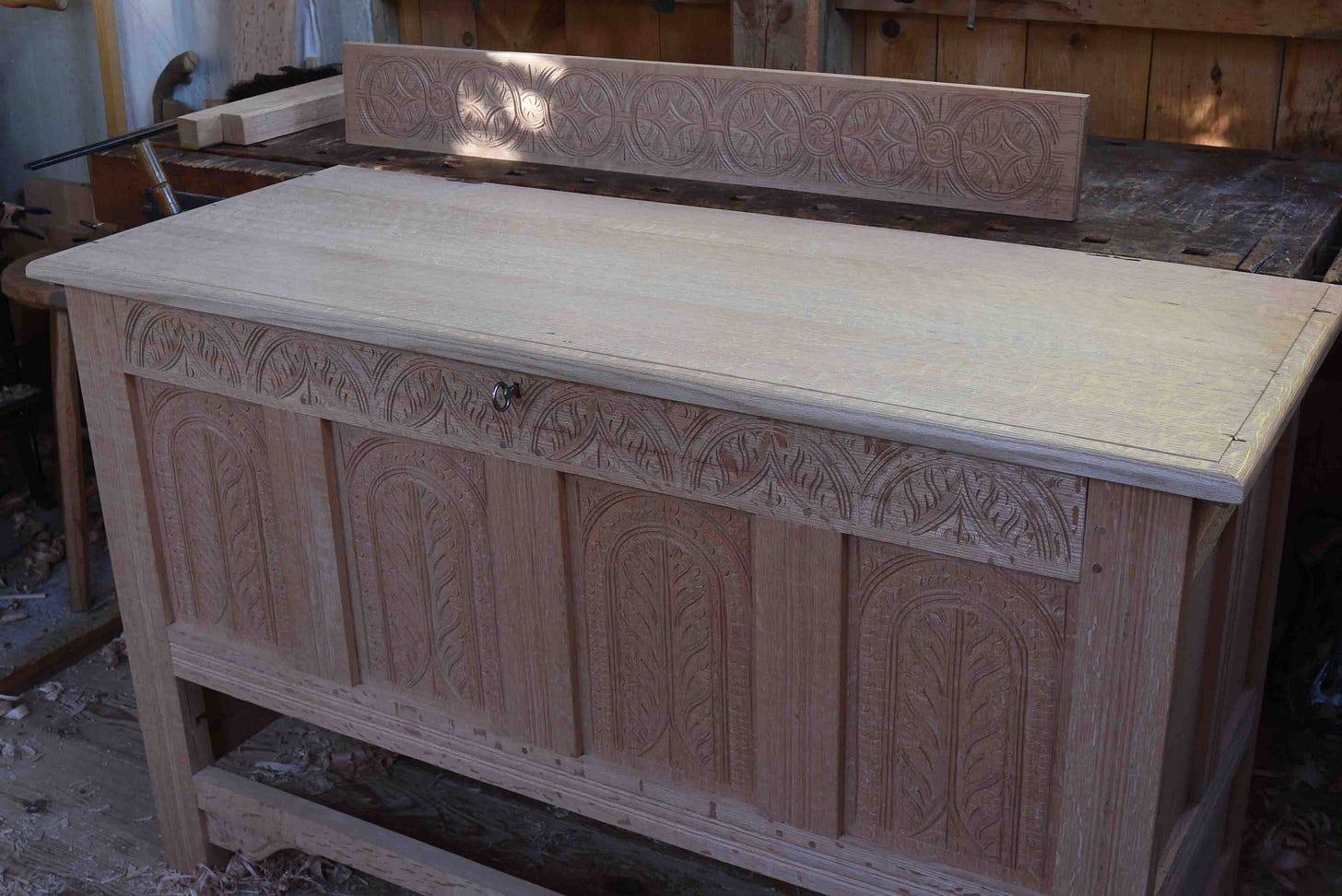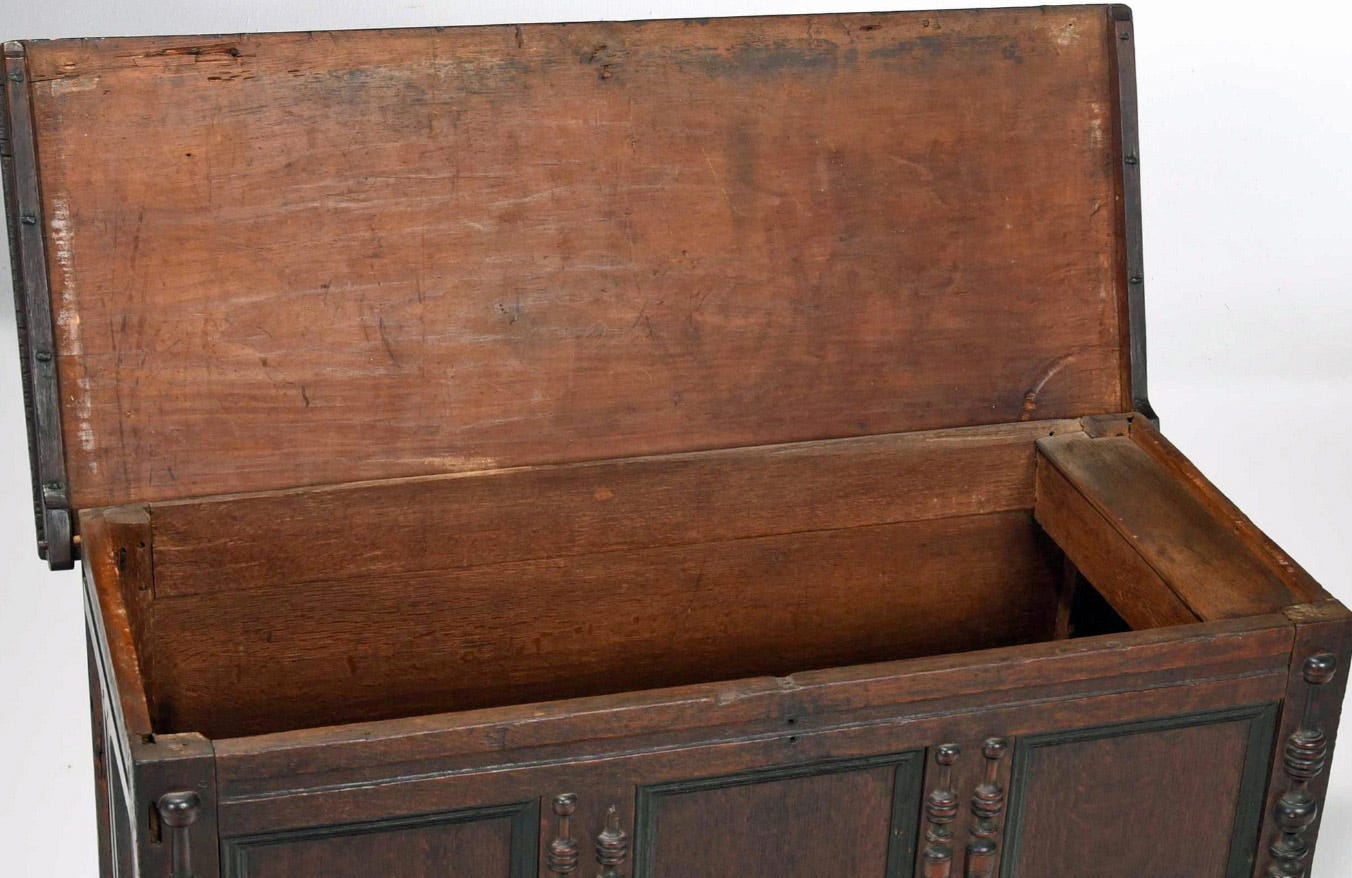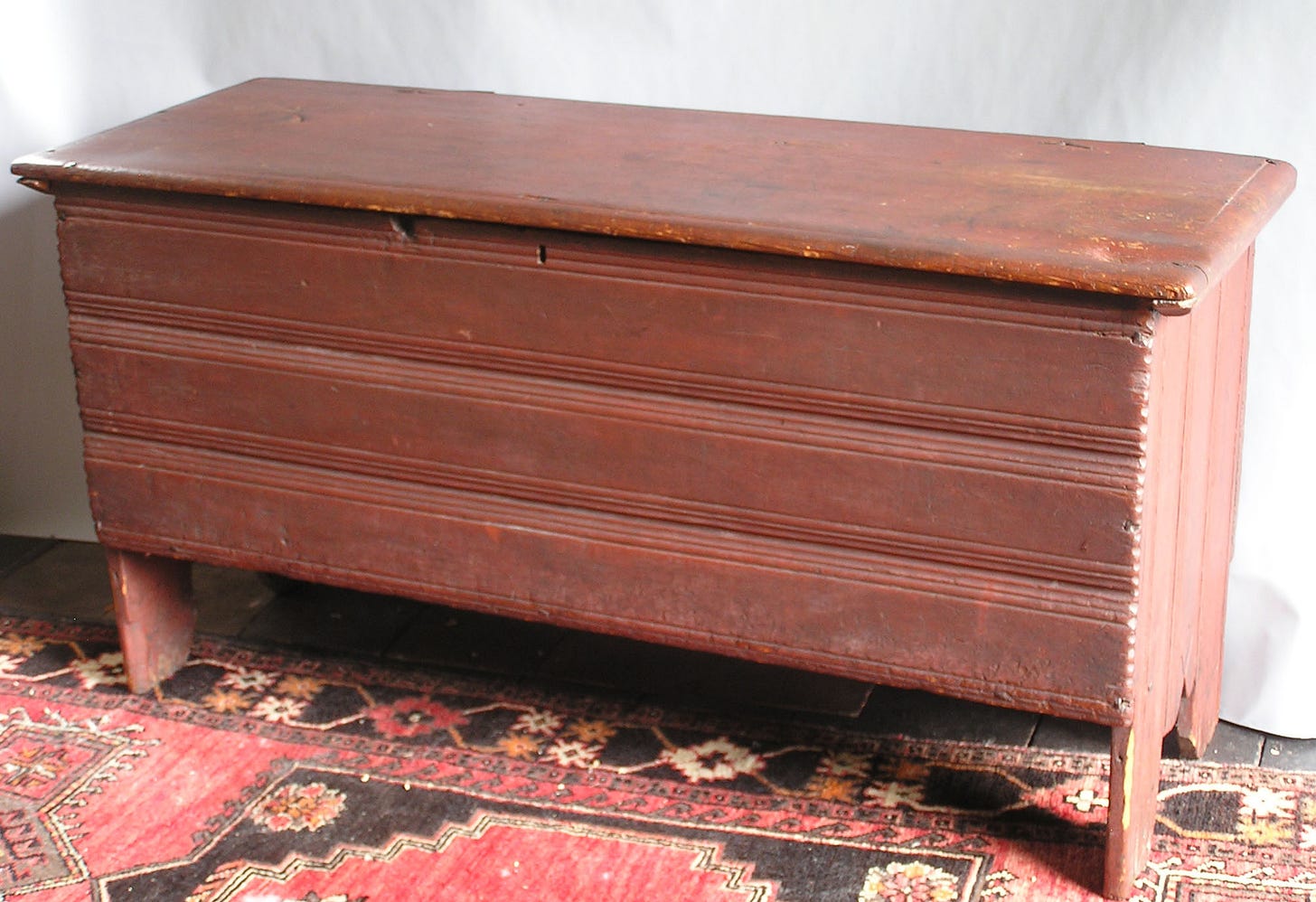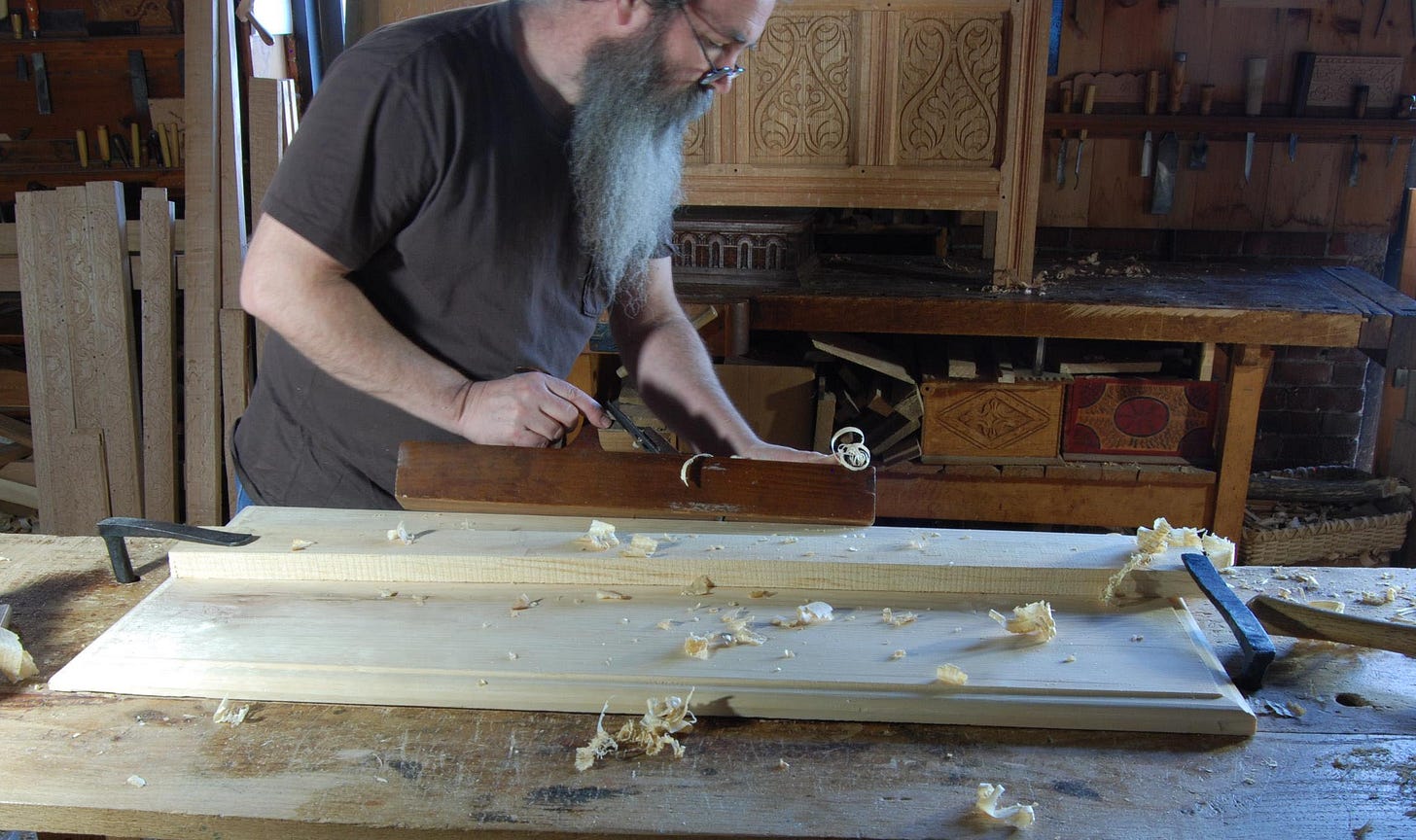Chest lids
more than one way...
[last announcement re: 7-day free trial - link is here. https://peterfollansbeejoinerswork.substack.com/60803986 Ends Oct 26. Thanks to all, for those who’ve signed on and those whose patience let me prattle on about it…]
I finished the lid for the chest I’m working on the other day. I didn’t get to shoot photos of the work for a number of reasons. Mostly related to time and space - I had little of both.
Chest lids come in a few formats. Here in New England a joiner seemed to have choices between a single-board, white pine lid, (away from coastal NE, sometimes yellow pine), a multi-board hardwood lid - usually oak, but not always, and a frame & panel lid of oak. I’ll sort the paneled lid first.
When I first started studying 17th century oak furniture, I read everything I could find - most of which was sent to me (or suggested to me) by Jennie Alexander and Bob Trent. I remember early on reading about a chest made in the Plymouth area (above) that has a frame-and-panel lid - and the interpretation of this form was two-fold. One - there was a belief that it was closely tied to English work - the work of what was called a “first-generation” joiner; a person trained in old England versus one trained here in New England. This notion was based on the higher number (maybe higher proportion) of English chests with paneled lids versus the three or four known New England examples. Another idea is that a paneled lid represented an increased amount of labor - planing up several pieces, cutting the mortise and tenon joints and fitting beveled panels into the lid - and therefore a higher price for a chest with a single-board white pine lid. The pricing comment is supposition, there’s no specific evidence for that sort of detail. Once I started making a lot of chests (approximately 60 by now) I got some insight into chest lids.
In New England, water-powered sawmills were up and running almost right from the start. Within a very short time most towns/settlements had access to sawn boards - most often, but not exclusively, white pine. (Yellow pine appears as well, usually away from coastal Massachusetts).
A prime example of New England joiners exploiting abundant white pine boards are board chests (today often called “six-board chests”) - these were almost always softwood here, versus pitsawn hardwood in old England (usually oak). Wide white pine boards were readily available in early New England - and can still be found without too much effort today.
A single board, 22” wide - no knots - is a tall order, but not out of the question. Once you have it, planing that to thickness is a walk in the park. Lighter lid too. Doesn’t wear as well as an oak lid, but completely serviceable. Can last several lifetimes easily.
Flat lids in English work are usually made up of several oak boards joined together edge-to-edge and then planed to the desired thickness and voilà- a lid. They are rarely a single-wide board. Mostly they’re flatsawn, which results in shrinkage across the width of the individual boards - which results in gaps between them. Ignore the paper glued to the inside of this chest below - if you zoom into that photo you can see the flatsawn grain, especially on our left. Those strap hinges are replacements, to their immediate left are the holes for the original gimmal/snipebill hinges.
Keep reading with a 7-day free trial
Subscribe to Follansbee's Substack to keep reading this post and get 7 days of free access to the full post archives.






